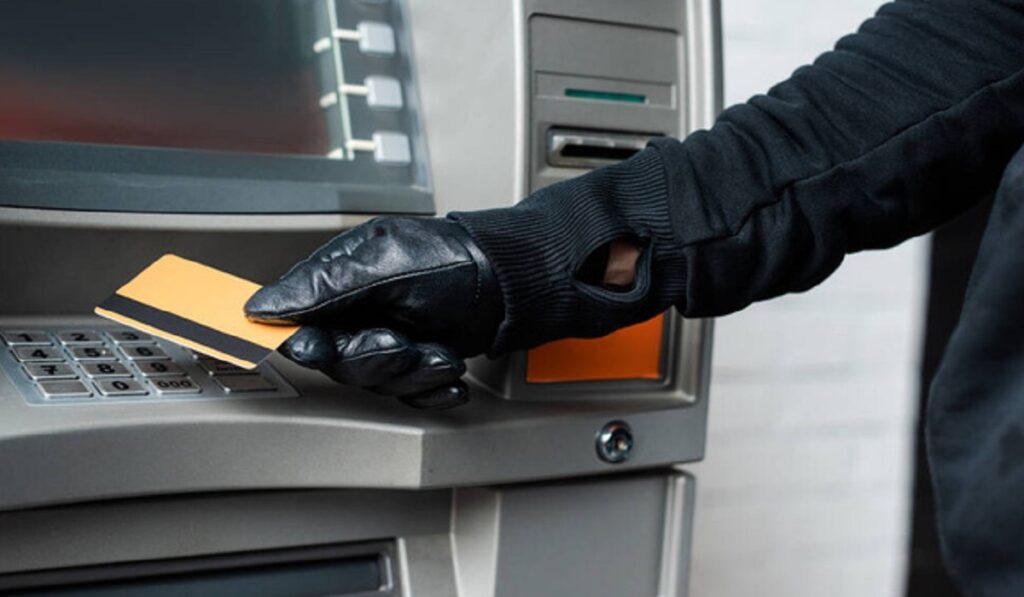Teen Cryptocurrency Book for Dummies

Cryptocurrency has captured the interest of teens globally in this digital era. While cryptocurrency offers many exciting opportunities for teen enthusiasts, its risks and complexities must also be understood fully in order to successfully use it with confidence. In this comprehensive guide I will take teens through its fundamentals — its origins, underlying technology, key considerations as well as potential pitfalls– while providing insight to assist their readers navigate this innovative form of virtual money with ease.
What Is Cryptocurrency (Digital Currency or Virtual Money)?
Cryptocurrency, commonly referred to as digital money or virtual money, relies on encryption technology for secure financial transactions. As opposed to fiat currencies issued by governments such as bitcoins issued through fiat markets issued from central authorities such as governments or central banker, they operate using decentralized blockchain networks like Ethereum which has seen thousands of other cryptocurrencies also known as altcoins appearing since 2009. Since 2009 there has been over 1500 different cryptocurrencies or altcoins introduced for use as payment system or virtual money platforms which use decentralized blockchain networks similar to cryptocurrency which operate without central authority issuing fiat fiat money issued by governments issuing fiat money which issues fiat currency issued directly by governments unlike fiat issued from governments but other decentralized cryptocurrencies have appeared which operate using decentralized blockchain networks instead. Bitcoin was first released as digital asset when first issued as digital asset by governments while operating under decentralized blockchain networks similar decentralized blockchain network structure since 2009. Since 2009 over 24,000 other cryptocurrencies known as altcoins with numerous alternatives already appearing like altcoins arising over time!
Cryptocurrencies have generated great excitement among young investors; it is, however, important to bear in mind that markets fluctuate frequently and may become volatile over time.
What Is Cryptocurrency…?…?
What Is Cryptocurrency? Blockchain technology forms the cornerstone of cryptocurrency. It acts as an unalterable ledger which records all network transactions; each “block” contains an unique cryptographic signature linked to previous blocks forming an “everlasting chain”, providing transparency while also helping prevent double spending and providing security and trustworthiness of cryptocurrency transactions.
Decentralized blockchains eliminate intermediary institutions like banks, and can lead to faster and cheaper international transactions.
Popular Cryptocurrencies Explained
Teenagers will soon encounter various cryptocurrencies on the market. Each has unique features and uses; for instance, Bitcoin (BTC), as the original and most well-known cryptocoin, acts like digital gold storage to hold value; Ethereum’s smart contracts allow developers to build decentralized applications (DApps); while Ripple(XRP), Litecoin(LTC), and Cardano(ADA) also stand out for filling unique niches within digital ecosystem.
Before investing in cryptocurrency, teens must do extensive research about them and understand their technology.
Investment Opportunities in Cryptocurrencies
Investment in cryptocurrency can be both exciting and unpredictable; therefore, teens must proceed carefully and with due consideration of potential market trends, project development plans, community support needs and regulatory considerations before investing. Furthermore, only invest what you are comfortable losing – markets are unpredictable!
Before making any investment decisions, seek guidance and advice from those with experience or financial experts to make sure you make an intelligent choice.
Security and Wallets
Securing cryptocurrency, like any digital asset, should be given top priority by teenagers. They should understand they should use reputable wallets that protect from scams and hacks while practicing good security habits like using strong passwords and two-factor authentication.
Stay alert for phishing scams and online fraud schemes involving cryptocurrency. Verify all platforms and services offered online before trusting their authenticity.

What are the types of cryptocurrency?
There are various varieties of cryptocurrency, each offering their own distinct set of benefits and uses. Here are the most prevalent varieties:
Bitcoin (BTC), the world’s most beloved cryptocurrency, was first invented by Satoshi Nakamoto of an unknown group or person in 2009. Based on a peer-to-peer decentralized network that serves both as storage and medium of exchange, bitcoin serves primarily as digital gold as well as protection against inflation.
Vitalik Buterin first unveiled Ethereum (ETH), another blockchain-based platform, in 2015. Ethereum differs from Bitcoin by emphasizing smart contracts – these self-execling contracts that execute themselves according to predefined conditions – making it popular with developers who wish to build decentralized applications on this blockchain-based system.
Ripple (XRP). Ripple was developed not only as a cryptocurrency but also as an international money transfer protocol designed for financial institutions – individual consumers cannot use Ripple directly.
Litecoin: Since 2011, when Charlie Lee launched it as “the silver to Bitcoin’s gold”, Litecoin has become known as an alternative cryptocurrency based on Bitcoin protocol with some technical differences, including faster block generation times and an alternative hashing algorithm compared to Bitcoin. Primarily designed to facilitate faster and cheaper transactions compared with bitcoin.
Cardano (ADA). Cardano is a blockchain platform with the aim of offering secure infrastructure for smart contracts and DApps that is both scalable and based on academic research, peer reviewed approaches, and academic studies.
Binance Coin (BNB), commonly referred to as Binance Coin, is the native cryptocurrency for Binance Exchange – one of the leading cryptocurrency exchanges globally. BNB can be used for transaction fees payment as well as reduced trading fees and participation at token sales events.
Polkadot: Polkadot is a multichain blockchain platform developed to link and integrate multiple blockchains. The aim is to enhance interoperability amongst blockchain ecosystem participants.
Solana (SOL), a high-performance Blockchain platform, is known for its low fees and quick transaction times – ideal for supporting projects and applications requiring high throughput.
Dogecoin: Created as a cryptocurrency inspired by memes in 2013, Dogecoin quickly rose in popularity after it debuted as an amusing form of payment used for tipping or small transactions. Today it can even be found used for tipping services!
Chainlink (LINK). Chainlink is an oracle decentralized network connecting intelligent contracts to external data sets for more flexible application development and execution. Smart contracts may interact with these external sources to form complex applications with complex logic that take full advantage of real world information.
Here are just a few examples of the many crypto currencies currently on the market, each offering something special in terms of value proposition and use case, meeting different needs within the blockchain ecosystem. As this market develops further, new varieties may emerge which expand applications and possibilities of this revolutionary technology.
Risks associated with investing in cryptocurrency
Investors must understand that investing in cryptocurrency carries many risks. Here are a few key risks that accompany cryptocurrency investments:
Cryptocurrencies possess extreme price volatility; prices can surge one day before plummeting the next. This risky investment option offers both potential gains and losses; so take care when investing here!
Lack of Regulation. In comparison with traditional financial markets, cryptocurrency trading markets are young and relatively unregulated compared to those associated with fiat money trading platforms such as Stocks. Investors could potentially become vulnerable to fraudsters manipulating markets through fraud schemes as there are few regulations protecting against potential scams in this regard.
Cryptocurrency storage requires secure digital wallets; investors who fail to utilize such wallets, become victims of phishing attacks or hacking schemes may lose their investments as a result.
Market Sentiment and Specularity: Cryptocurrency prices can be heavily affected by market sentiment, social-media trends and speculative value; not intrinsic values alone. Fear-driven investment decisions often make FOMO or FUD happen unknowingly resulting in poor decisions being made due to emotional investments made due to these external forces.
Limited Adoption and Acceptance: Although cryptocurrency are becoming more mainstream, they remain somewhat underused as payment methods and this limited adoption may erode their long-term value and stability.
Regulation Changes – Countries and regulatory agencies around the globe are continually reviewing how best to approach cryptocurrency, with proposed regulatory and ban changes having significant effects on both their legality and value.
Cryptocurrencies rely on blockchain technology, but investor confidence could be affected by vulnerabilities, bugs and hard forks in that ecosystem.
Investors who lack sufficient understanding may make unwise choices due to insufficient understanding.
Market Manipulation – As cryptocurrency markets remain relatively unregulated, individuals or groups with bad intentions could use any lull in regulations to take advantage of its relative infancy by manipulating cryptocurrency prices in an effort to take advantage of any opportunities created in its infancy.

Lack of consumer protection: In contrast to more established forms of financial transaction, cryptocurrency might not offer as many avenues for disputing fraudulent or illicit activity as traditional systems do.
Risk in Project Development: When investing in specific cryptocurrencies, you are often gambling on their success and growth of an enterprise or project. A cryptocurrency’s value could be affected if an enterprise doesn’t deliver on promises made, or runs into issues during development.
Investment in cryptocurrency can be both rewarding and risky, so prospective investors must carefully assess their level of risk tolerance prior to entering the cryptocurrency market. Furthermore, they should conduct extensive research and consult financial professionals; understanding risks is integral in making informed choices in an unpredictable field like cryptocurrency; diversification, caution and having long term goals all represent helpful strategies which may mitigate some of its inherent dangers.
Blockchain Alternative Investments.
Here are some popular strategies for diversifying your portfolio outside of cryptocurrency.
- Stocks: By investing in exchange-traded funds (ETF) or individual company shares, you can take part in the performance and growth of well-established businesses in different industries. Stocks can provide long-term dividends as well as capital growth.
- Bonds: Bonds are debt securities issued by governments, municipalities or corporations and offer more stable income returns than stocks for conservative investors.
- Real Estate: When investing in real estate through direct property ownership or REITs, the payoff could include rental income and potentially increasing its value.
- Mutual Funds: Mutual funds pool money from many investors to invest in stocks, bonds and other assets under professional management with diversification capabilities. They provide professional management as well as protection.
- Gold and Other Precious Metals: Gold can serve as an effective protection against inflation and economic uncertainty, providing a hedge to provide future income security and growth potential.
- Peer to Peer Lending: These platforms enable individuals and small businesses to lend money with interest at stake for smaller loans from peers.
- Art and CollectiblesInvesting in art, collectibles or rare items can yield substantial returns – particularly where there is high demand and limited supply.
- Venture capital funds and private companies provide access to high-growth startups.
- Commodities provide an effective hedge against inflation and geopolitical risk.
- Certificates of Deposit (CDs) are low-risk deposits offered by banks with fixed maturity dates that offer interest-bearing returns over short timeframes, making them perfect for short term savings goals.
- Crowdfunded Real Estate Investment Platforms : Real estate crowdfunding platforms enable investors with limited capital to diversify their real estate holdings through crowdfunded investing platforms.
- Environmental, Social and Governance Investments – ESG investments aim to focus on companies with exceptional sustainability practices and responsible operations.
Before investing your money, it’s essential that you conduct extensive research and fully comprehend all of the associated risks. When selecting alternative investments, carefully consider your financial goals, risk tolerance and time horizon in order to build a portfolio aligned with them. Working with an investment professional or advisor may offer valuable guidance as you tailor an investment plan tailored specifically towards meeting those objectives.






